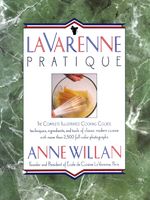Label
All
0
Clear all filters
Red or White Wine Vinegar
Appears in
By Anne Willan
Published 1989
Wine vinegar is produced from the acetic fermentation of red or white wine. The best is made by the Orléans method, in which wine is put into oak barrels and left for the culture, or “mother”, to form. The “mother” (a layer of yeast cells and bacteria formed during fermentation) is the key to making wine vinegar. It can be obtained from a vinegar maker or winery, by pouring unpasteurized vinegar into new wine, or as a commercial preparation. As the vinegar develops, it is drawn off the bottom of the keg while fresh wine is added to maintain the level. Different wines, young or old, may be used, ranging from light Champagne (which has no bubbles) to varietal wines and fortified wine like sherry.
Become a Premium Member to access this page
Unlimited, ad-free access to hundreds of the world’s best cookbooks
Over 160,000 recipes with thousands more added every month
Recommended by leading chefs and food writers
Powerful search filters to match your tastes
Create collections and add reviews or private notes to any recipe
Swipe to browse each cookbook from cover-to-cover
Manage your subscription via the My Membership page
Best value
In this section
Part of
Advertisement
Advertisement
The licensor does not allow printing of this title


